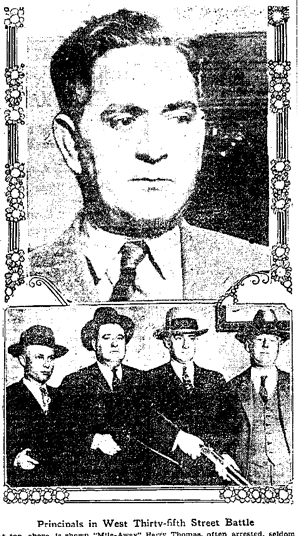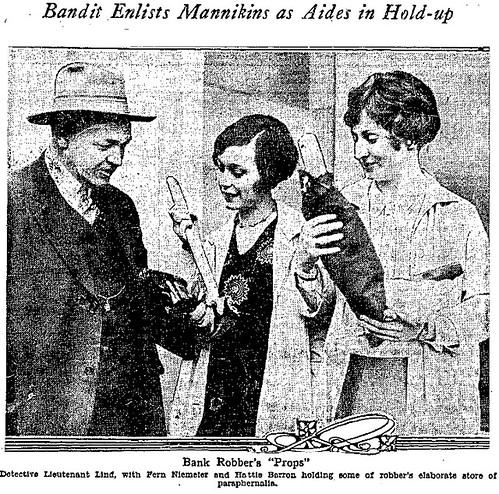May 1, 1927
Los Angeles
In the Times today, a round-up of street crime incidents calculated to terrorize city residents, or at least discourage freelance musicians, good Samaritans and lingering outside a lady’s home in an open car–sheesh, buddy, get a room.
Clarinetist Antonio Cili thought he was being hired to play a gig when three gentlemen picked him up at Sixth and Broadway, drove to Fourth and Pecan, tossed him from the car, beat him silly and stole his instrument and $20.
Jennie Emerson of 2611 Vallejo Street was nearly run down in the street while crossing at Daly and Manitou in Lincoln Heights, and while recovering her wits confronted by the armed driver and his pal, who threatened to kill her before stealing her purse.
A bandit robbed J. Maganuma of $40 cash and a serving of chop suey at his restaurant at 4911 South Broadway. It was not reported if Mr. Maganuma spat in the food, but we certainly hope so.
A. Eisner was carjacked at First and New Hampshire, forced to drive to Sixth and Lucas and relieved of his $100 stick pin, $40 watch and $8 cash. Maybe it’s Eisner’s home address of 5579 Santa Monica Boulevard or the fancy stick pin that gives this brief tale the whiff of rough trade, or possibly we just have dirty minds.
Joseph Michael, while strolling by a doorway near First and Main was lassoed by a couple of rope-wielding miscreants who strangled Michael into unconsciousness and stole $35, this just two blocks from Central Police HQ.
Kindly Arthur Roper was driving along (now defunct) California Street near Figueroa when he spied a fashionably garbed young lady in apparent distress in the middle of the road. He stopped to lend aid and her friend hopped onto Roper’s running board with a revolver, which was clapped to Roper’s chest while the gal riffled his pockets of $53 cash.
And then there was Jacob L. Johannes of 228 South Rodeo Drive, who was sitting in a car with Miss Marie Boucher outside her home at 5806 Carlton Way when a fiend with a revolver relieved the lady of a $1000 fur coat, $75 watch and $50 bar pin. Johannes lost $6 cash. Buddy, you can’t afford a room… or Miss Boucher.
Now be careful out there!


 Officers responded to her call about a prowler, and when they arrived, acclaimed hijacker Thomas went for his piece. The cops opened up with a machine gun, a sawed-off shotgun and two large-caliber revolvers, and yet the twice-arrested-for-murder, “King of the Hi-Jackers” Mile-Away Thomas, filled with pounds of buckshot and slugs, ran from the garage straight at the cops.
Officers responded to her call about a prowler, and when they arrived, acclaimed hijacker Thomas went for his piece. The cops opened up with a machine gun, a sawed-off shotgun and two large-caliber revolvers, and yet the twice-arrested-for-murder, “King of the Hi-Jackers” Mile-Away Thomas, filled with pounds of buckshot and slugs, ran from the garage straight at the cops. 





